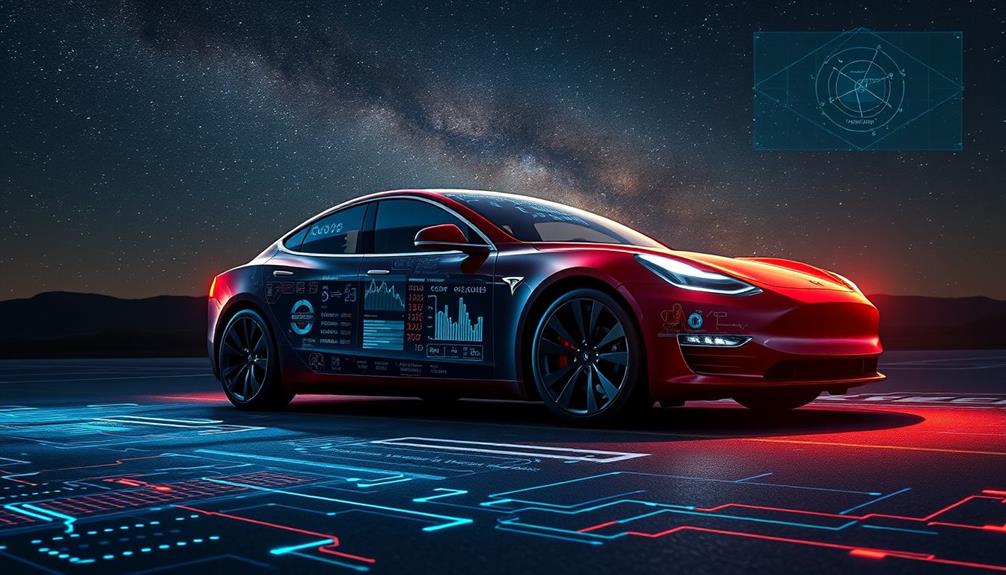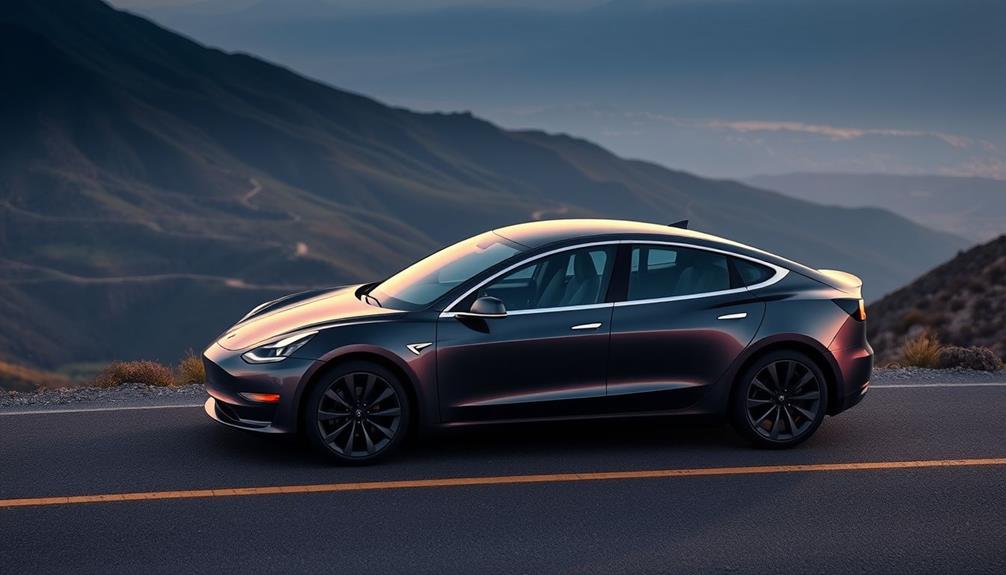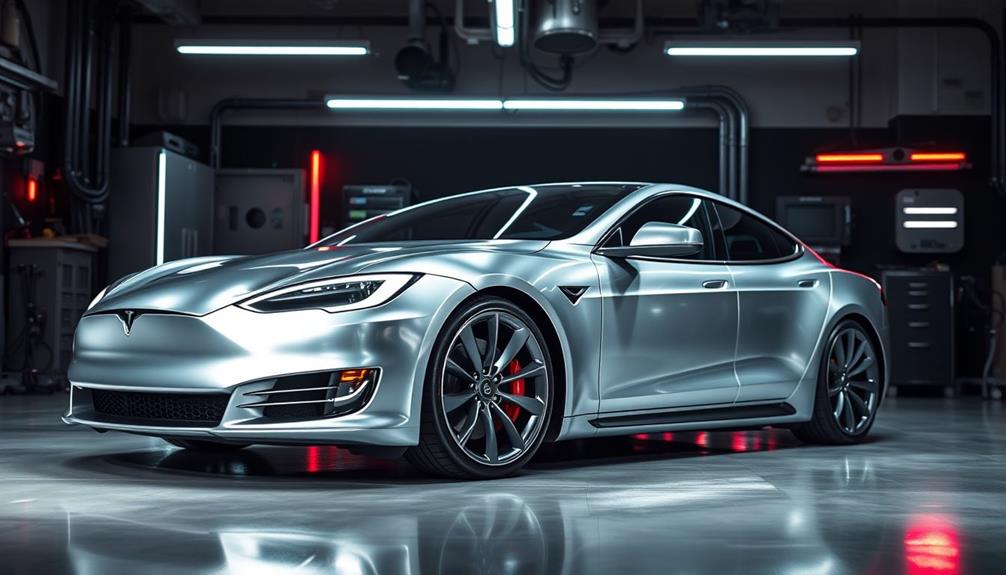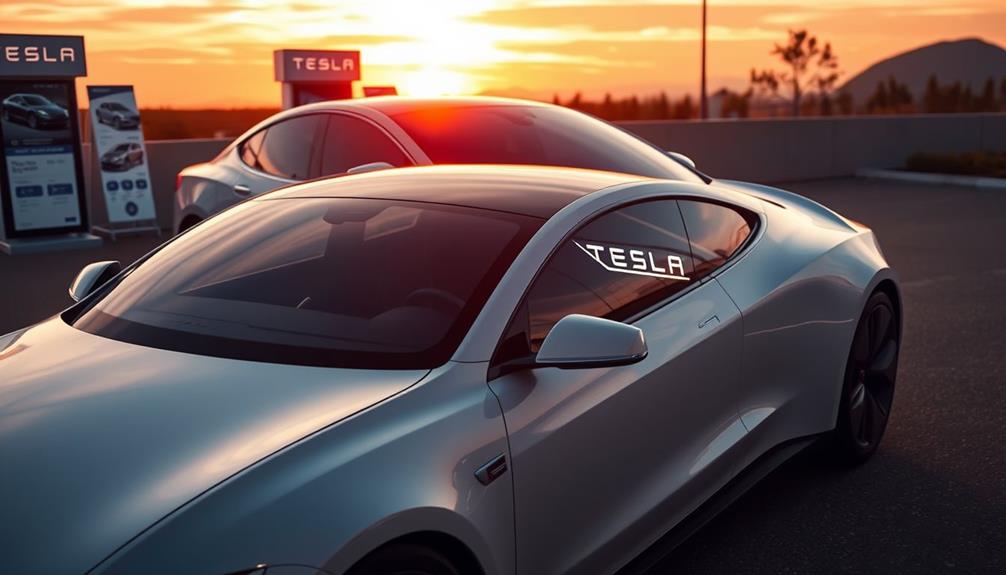Tesla's software tuning allows you to access the full potential of your electric vehicle effortlessly. With regular software updates, Tesla enhances performance and features, ensuring your car feels fresh and responsive over time. Upgrades like Acceleration Boost can add up to 50 horsepower, making your drive considerably more exhilarating. While third-party options exist, weigh the risks, as they might affect your warranty and future software updates. Tesla's innovations continually improve user experience, making every journey enjoyable. Explore how you can leverage these upgrades for maximum performance and features that elevate your driving experience even further.
Key Takeaways
- Tesla vehicles receive regular software updates that enhance performance and functionality without needing hardware changes, maximizing long-term value for owners.
- Upgrades like Acceleration Boost can significantly increase horsepower, allowing for improved acceleration and driving experience at competitive prices.
- Third-party modifications, such as Ingenext's offerings, provide lower-cost performance enhancements, appealing to consumers seeking more customization options for their EVs.
- Understanding the implications of third-party upgrades is crucial, as they may void warranties and complicate future software updates.
- Tesla's innovations and consumer rights discussions influence the future market for performance tuning, balancing manufacturer control with owner customization desires.
Tesla Software Upgrades Overview
Have you ever wondered how Tesla vehicles manage to improve performance over time? The secret lies in Tesla's software. Unlike traditional cars, Tesla allows you to access capabilities that were initially software-locked.
For instance, if you own a Model 3 Dual Motor, you can enhance its acceleration with the Acceleration Boost upgrade. For $2,000, you'll gain an additional 50 horsepower, shaving your 0-60 mph time down to just 3.9 seconds.
But that's not all. You can also upgrade your battery pack from 60 kWh to 75 kWh through software, a performance enhancement valued at about $5,000. This innovative approach keeps your vehicle competitive without requiring physical modifications.
While third-party options like Ingenext's Boost 50 offer similar enhancements for $1,100, they come with potential risks. You might save money, but concerns about future software updates and warranty issues can arise.
As the market for Tesla software upgrades continues to evolve, it's clear that these options are reshaping how you think about EV performance enhancements. Tesla's software empowers you to access the full potential of your electric vehicle with just a few clicks. When it comes to tuning your Tesla Model 3, the possibilities are endless. You can enhance your vehicle’s acceleration, range, and overall driving experience with customizable software upgrades. The flexibility and ease of these upgrades make it simple to tailor your Tesla to your specific needs and preferences.
Ingenext's Competitive Offerings
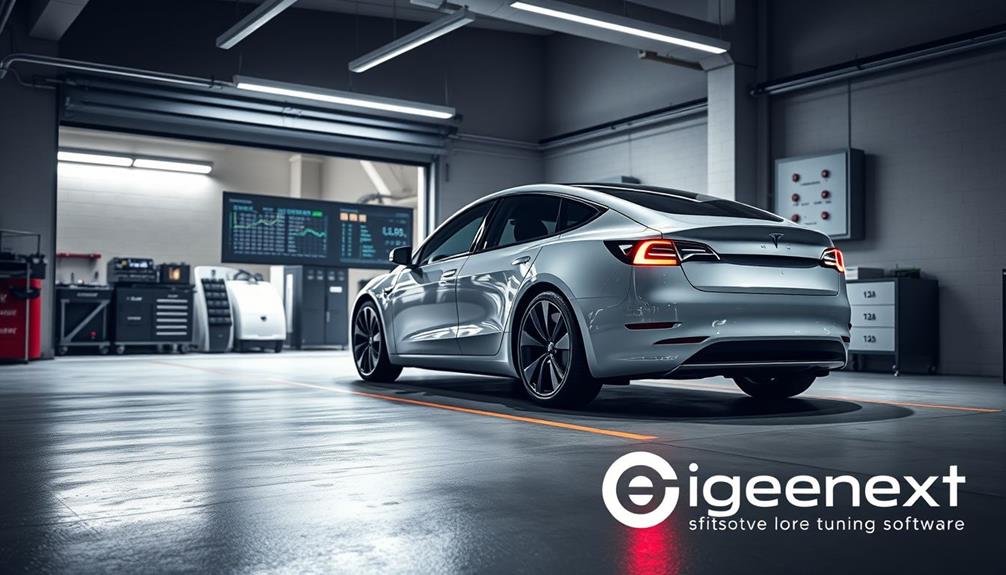
Ingenext's competitive offerings are making waves in the Tesla upgrade market, providing options that appeal to performance enthusiasts looking for an edge. Founded by Guillaume André, Ingenext specializes in enhancing Tesla's software, offering its own version of Tesla's Acceleration Boost called Boost 50.
For just $1,100, you can gain a remarkable 50 hp increase, allowing your Model 3 Performance to achieve 0-100 km/h in only 3.8 seconds—surpassing the factory performance.
What sets Ingenext apart isn't only its pricing strategy, which undercuts Tesla's upgrade costs, but also the additional features it offers. For instance, Drift Mode has become a popular addition, appealing to those who want more from their driving experience.
If you're considering more invasive upgrades for the Model 3 Performance, note that professional installation is recommended to guarantee everything functions properly.
Ingenext's commitment to delivering high-quality enhancements and its focus on affordability make it a compelling choice for Tesla owners enthusiastic to push their vehicles beyond factory limits.
Whether you're after speed or advanced features, Ingenext has you covered.
Controversies in Vehicle Modifications
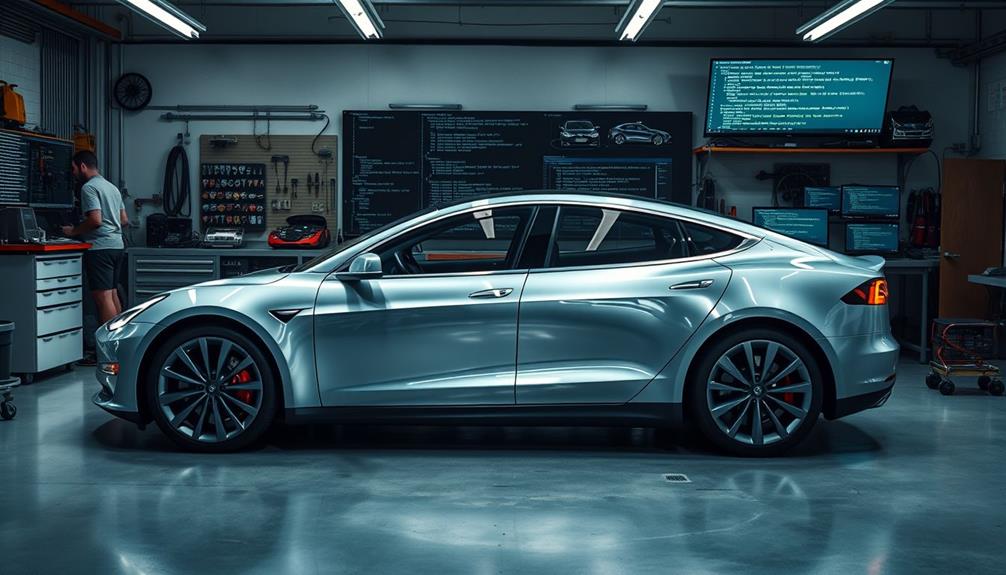
When you consider third-party upgrades for your Tesla, it's essential to weigh the risks, like potential warranty voiding and software update issues.
While many owners argue for their right to modify their vehicles, these changes could impact Tesla's revenue and future development.
This growing interest in aftermarket options raises important questions about ownership and the evolving landscape of electric vehicle enhancements.
Third-Party Upgrade Risks
Amid the growing interest in vehicle modifications, third-party software upgrades for Tesla vehicles have sparked significant controversy. Companies like Ingenext offer enticing options, such as the Boost 50, which releases extra horsepower and features like Drift Mode. However, these third-party upgrades carry risks that you should consider.
| Aspect | Pros | Cons |
|---|---|---|
| Performance Boost | Increases horsepower and features | May void warranty |
| Customization | Personalizes vehicle experience | Complicates future software updates |
| Market Alternatives | Reduces reliance on Tesla for upgrades | Raises safety and regulatory concerns |
Consumer opinions vary widely. While some advocate for their right to modify, others warn of the potential legal implications and safety risks. Tesla's software-locked capabilities create a demand for these third-party upgrades, but it's crucial for you to weigh the benefits against the possible downsides. Engaging in modifications might seem appealing, but understanding the implications can help you make a more informed decision.
Consumer Modification Rights
The ongoing debate over consumer modification rights highlights a significant controversy in the automotive world, particularly regarding Tesla vehicles.
As a Tesla owner, you might find yourself caught in the middle of this discussion, especially with third-party options like Ingenext's Boost 50 upgrade. Priced at $1,100, this modification promises a 50 hp increase and additional features, which many see as a more affordable alternative to Tesla's $2,000 Acceleration Boost.
Supporters argue that consumer rights should allow you to access software-locked capabilities, enhancing your vehicle's performance after purchase. They believe modifications are a legitimate expression of ownership.
However, critics raise concerns about the risks associated with such changes. They warn that third-party modifications could lead to complications with future software updates and might even void your warranty.
This ongoing debate reflects a larger issue: how to balance consumer rights with manufacturers' control over vehicle software and modifications.
As a consumer, you deserve the right to modify your vehicle, but it's crucial to weigh the potential benefits against the risks involved.
Tesla Revenue Implications
Steering through the implications of Tesla's revenue model in light of vehicle modifications reveals a complex landscape. The emergence of third-party upgrades like Ingenext's Acceleration Boost, which offers a 50 hp increase for $1,100, undercuts Tesla's pricing and could divert revenue from the company. This shift raises questions about consumer rights and the loyalty of Tesla's customer base.
| Modification Type | Tesla Price | Ingenext Price |
|---|---|---|
| Acceleration Boost | $2,000 | $1,100 |
| Performance Upgrade | Varies | $600 |
| Battery Management | Varies | $400 |
| Enhanced Autopilot | $10,000 | N/A |
| Overall Software Hacks | N/A | Varies |
As more consumers look to aftermarket upgrades, Tesla's software-locked capabilities might attract both interest and competition. However, risks associated with third-party modifications—like warranty issues and software complications—could deter some buyers. Ongoing developments in EV software hacking could further reshape market dynamics, posing a significant challenge to Tesla's revenue from its official upgrades. Balancing innovation with consumer rights will be essential for Tesla's future profitability.
Market Impact of Aftermarket Upgrades
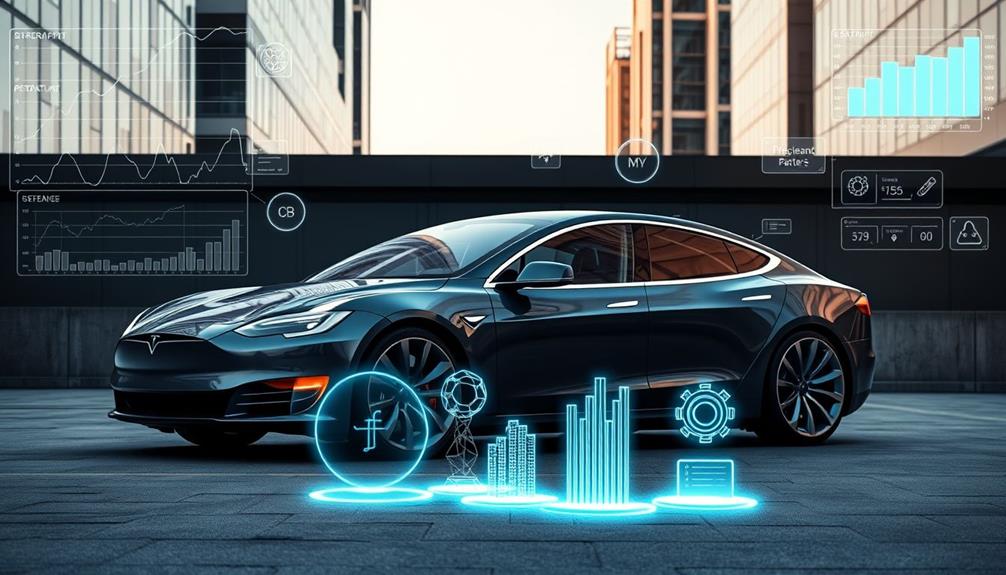
As you explore the rise of aftermarket upgrades, it's clear that competition from third-party options like Ingenext is shaking up the market.
With their lower-priced performance enhancements, these upgrades could divert revenue away from Tesla, raising concerns about long-term profitability.
This shift not only impacts Tesla's control over vehicle capabilities but also challenges customer loyalty in the evolving EV landscape.
Third-Party Upgrade Competition
With the rise of third-party upgrades, Tesla owners are now faced with exciting options that challenge the automaker's hold on performance enhancements. Companies like Ingenext are shaking up the market by offering upgrades like the Boost 50 feature, which boosts your electric vehicle's horsepower by 50 for just $1,100—significantly undercutting Tesla's own Acceleration Boost at $2,000.
This competitive pricing demonstrates a growing interest among consumers to enhance their EVs beyond factory settings. As a Tesla owner, you might appreciate the opportunity to access and modify your vehicle post-purchase.
However, this shift raises questions about consumer rights and the implications for Tesla's customer loyalty. The increasing availability of aftermarket performance upgrades suggests that more owners are enthusiastic to push their electric vehicles to new limits.
Moreover, the ongoing advancements in EV software hacking and modifications could reshape the dynamics of the electric vehicle market. By embracing third-party options, you not only gain access to cost-effective enhancements but also contribute to a broader conversation about ownership and customization in the EV space.
Revenue Diversion Concerns
Diversifying your options with aftermarket upgrades can greatly impact Tesla's revenue streams. Ingenext's Boost 50 and similar offerings present a cheaper alternative to Tesla's official software upgrades, directly raising revenue diversion concerns.
When you have access to less expensive options, you may choose aftermarket solutions instead of Tesla's pricier upgrades, potentially undermining the company's pricing strategy.
The surge in third-party modifications sparks questions about consumer rights, as many owners feel entitled to modify their vehicles post-purchase. This shift in mindset could reshape the aftermarket upgrade market, putting additional pressure on Tesla to rethink their own offerings.
Increased interest in these upgrades signifies a growing competition in the EV performance space, compelling Tesla to adapt its pricing and upgrade strategies.
If consumer demand for modifications continues to rise, Tesla might struggle to maintain its revenue from software upgrades.
As you weigh your options, it's essential to reflect on how these aftermarket solutions not only enhance your Tesla experience but also influence the broader market dynamics and the company's future financial health.
Tesla's Referral Program Benefits

Tesla's referral program offers exciting benefits that can enhance your ownership experience while rewarding you for sharing your enthusiasm. When you refer a friend to purchase a Model 3 or Model Y, you earn 10,000 credits. For a Model S or Model X, that reward jumps to 20,000 credits. You can also earn 100 points just for demo drive referrals, with full credits if the referred purchase is completed.
Current incentives make the program even more appealing. New buyers can enjoy up to $1,000 off the vehicle price and receive three months of full self-driving capabilities, showcasing Tesla's software at its finest. This encourages you to leverage your personal network for referrals, maximizing your rewards and benefits.
If you don't have personal contacts to refer, don't worry! Tesla provides a referral link, allowing you to participate in the program and reap the benefits.
Accessing the full potential of Tesla's software and enjoying exclusive perks is just a referral away. So, share your passion for Tesla, and watch the rewards roll in!
Insights on Cybertruck Production

Excitement is building as the production line for the Cybertruck at Giga Texas progresses, with a debut expected in Q3 2023. Tesla started this journey with a focus on quality, as evidenced by a leaked video showing the Cybertruck being hand-built during its initial production phases.
To enhance performance, new Aero Wheels have been introduced, featuring a streamlined design aimed at reducing wind resistance for better efficiency. Tesla plans to launch a 350-mile variant of the Cybertruck first, followed by a 500-mile version later on.
Here's a quick overview of some key features:
| Feature | Details |
|---|---|
| Production Approach | Hand-built for quality |
| Wheel Design | New Aero Wheels for efficiency |
| Weight-Saving Tech | Giga casting for lighter build |
With innovative manufacturing techniques, the Cybertruck is set to be lighter than its competitors in the electric truck market. As the production continues, keep an eye out for updates, as this vehicle promises to redefine the electric truck landscape.
Cost Advantages of Electric Vehicles

When you switch to an electric vehicle, you can unfasten significant long-term savings.
With lower fuel costs and reduced maintenance expenses, you'll see the financial benefits add up over time.
Plus, the fewer moving parts in EVs mean less hassle and more reliability on the road.
Long-term Savings Potential
Switching to electric vehicles (EVs) can lead to impressive long-term savings, especially for organizations like police departments. For instance, the Tesla Model Y can save around $27,000 over five years, primarily due to drastically reduced fuel costs.
Traditional gasoline vehicles consume about 60% of their fuel while idling, but the Model Y doesn't require fuel during idle time, offering significant cost advantages.
The efficiency of electric powertrains means electricity typically costs less per mile than gasoline or diesel. This translates into lower overall energy expenses, which is critical for budget-conscious organizations.
Additionally, various tax incentives and rebates available for EV purchases can further enhance your long-term savings.
Reduced Maintenance Expenses
One of the standout advantages of electric vehicles (EVs) is their notably reduced maintenance expenses. With fewer moving parts compared to traditional gasoline vehicles, EVs require less frequent and less costly repairs. Over five years, you could save approximately $27,000 in operating costs, primarily due to these lower maintenance needs and the cost of electricity for charging being generally cheaper than gasoline.
Moreover, EVs utilize regenerative braking systems, which greatly reduce wear and tear on components like brakes. This means you won't have to replace those parts as often, further cutting down your maintenance expenses.
When you add in the warranties many manufacturers, including Tesla, provide for key components, you can drive with peace of mind knowing that potential repair costs are mitigated during the warranty period.
Additionally, with features like acceleration boost, EVs not only deliver thrilling performance but also reduce the likelihood of component wear from aggressive driving.
Lower Fuel Costs
Taking advantage of lower fuel costs is one of the most compelling reasons to choose an electric vehicle (EV). Over five years, you could save approximately $27,000 in fuel expenses compared to traditional gasoline vehicles. The lower energy costs and reduced fuel consumption during idling play a notable role in this savings.
Unlike gasoline-powered cars, which can waste up to 60% of their fuel while idling, EVs operate efficiently with always-on electronics, allowing you to maintain quick response readiness without burning through fuel.
Charging your EV typically costs around $15 to $20, depending on local electricity rates, which is considerably less than refueling a gasoline vehicle. As technology continues to evolve, more consumers are starting to recognize the long-term financial advantages of electric vehicles, leading to a surge in adoption and investment in electric mobility solutions.
Not only do these lower fuel costs make EVs a smart financial choice, but they also contribute to sustainability efforts, producing zero tailpipe emissions while on the road.
Recent Software Innovations
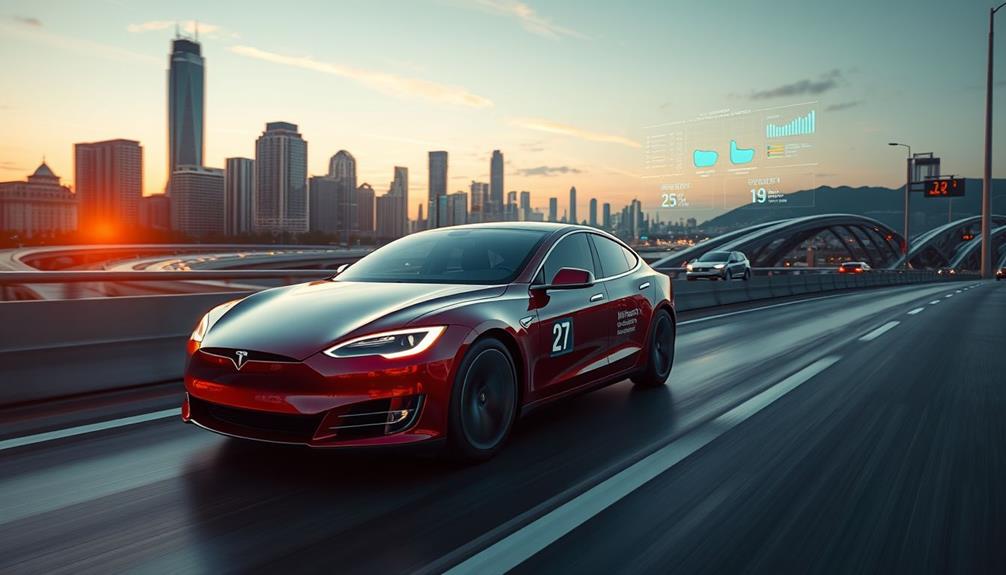
Recent software innovations in Tesla vehicles are transforming the driving experience and expanding functionalities without the need for hardware upgrades. You can now enjoy enhancements like increased battery capacity, improved performance, and user-friendly features with just a software update.
Here's a look at some of the latest news in Tesla software innovations:
| Feature | Description |
|---|---|
| Increased Battery Capacity | Upgrade from 60 kWh to 75 kWh |
| HVAC Fan Speed Adjustment | Automatically lowers during calls |
| Pedestrian Warning System Pause | Temporarily disable for specific vehicles |
| Ingenext Boost 50 | Adds 50 hp for better acceleration |
| Unpatchable Features Activation | Hackers activating locked functions |
These updates not only enhance your vehicle's performance but also improve your overall experience. Tesla's ongoing commitment to software innovations means you can expect regular updates to maximize efficiency and functionality. Whether you're looking to enhance performance or simply enjoy a quieter ride during calls, these innovations are designed with you in mind. So, keep an eye out for the latest updates and activate the full potential of your Tesla!
Safety Investigations and Responses
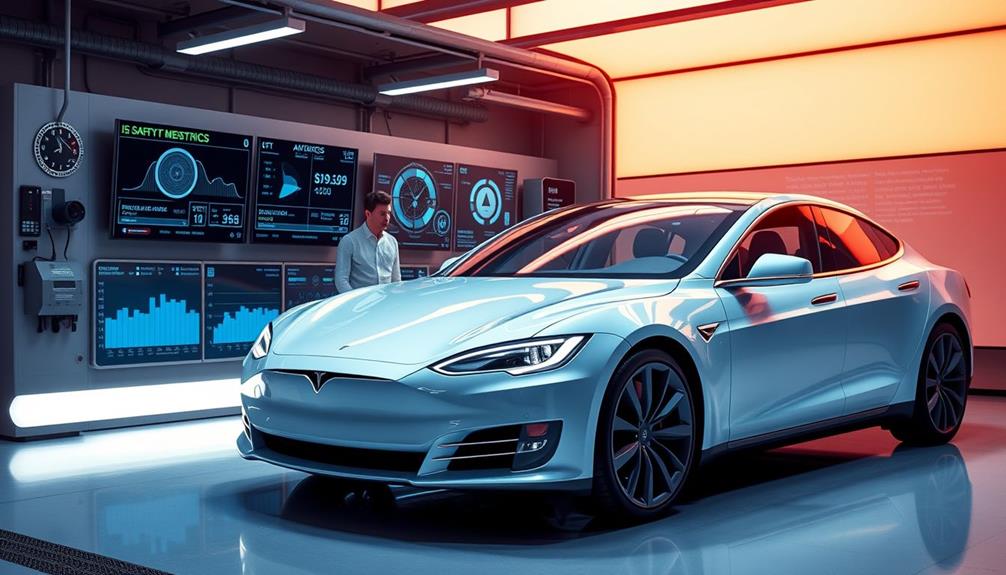
As the NHTSA investigates the 2023 Tesla Model 3 and Model Y for reported steering control issues, the company's commitment to safety remains a top priority.
Twelve complaints have surfaced regarding loss of steering control and power steering problems shortly after purchase, with some incidents involving steering wheels locking up. This has prompted a preliminary evaluation that could lead to a recall if significant hazards are identified.
Tesla's strong safety reputation is built on its history of proactively addressing concerns and issuing recalls when necessary. You can trust that the company's engineering teams are diligently working to resolve these steering issues. Their focus on safety underscores Tesla's commitment to innovation and quality in vehicle manufacturing.
Furthermore, Tesla's continuous improvements in technology and regular software updates showcase their dedication to enhancing the safety and functionality of the Model 3 and Y.
While the NHTSA investigation unfolds, it's crucial to stay informed about any developments. Tesla's proactive approach to safety guarantees that you're driving a vehicle designed with your safety in mind, reinforcing the brand's dedication to providing reliable electric vehicles.
Future Trends in EV Technology
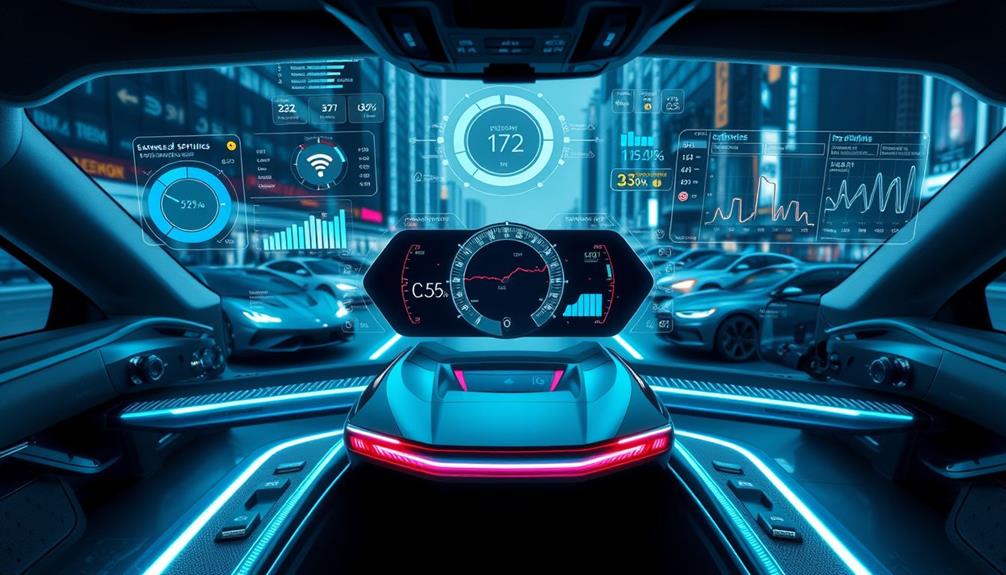
Five key trends are shaping the future of electric vehicle (EV) technology, and they promise to revolutionize how you interact with your car. As Tesla's software evolves, you'll find that customization and performance enhancements become more accessible.
Here are three trends to watch:
- Third-Party Software Upgrades: Companies like Ingenext are offering performance boosts at lower costs, making it easier for you to enhance your EV without relying solely on manufacturer upgrades.
- Software-Locked Capabilities: Tesla's software-locked features, such as Acceleration Boost, show how manufacturers are increasingly using software to manage your vehicle's performance even after purchase, allowing for a dynamic ownership experience.
- Consumer Customization: With rising interest in personalizing EVs, expect more services that offer performance tuning and feature activation, influencing how Tesla and other manufacturers approach design and security.
As competition heats up, Tesla's software offerings could become more innovative, leading to aggressive pricing strategies and enhanced features, ultimately giving you greater control over your driving experience.
Embrace these trends, and you'll reveal the full potential of your electric vehicle.
Frequently Asked Questions
Can Tesla Unlock More Range?
Yes, you can access more range in your Tesla. Through official updates or third-party upgrades, you can enhance battery capacity and efficiency, but keep in mind the potential risks to warranties and future software support.
How Do You Remove a Tesla Limiter?
To remove a Tesla limiter, you can upgrade through Tesla's Acceleration Boost for $2,000 or use Ingenext's Boost 50 for $1,100. Just remember, third-party options might void your warranty or cause issues.
Can You Make a Tesla More Powerful?
You can definitely make a Tesla more powerful! Consider software upgrades like Tesla's Acceleration Boost or third-party options like Ingenext's Boost 50. These enhancements increase horsepower and reduce acceleration times, boosting your driving experience considerably.
How Do You Unlock Ludicrous Mode on a Tesla?
Imagine feeling a roller coaster's rush; that's what activating Ludicrous Mode feels like. To activate it, purchase the upgrade through Tesla's software options, then simply engage it via your vehicle's touchscreen in Race mode.
Conclusion
Releasing your Tesla's full potential through software tuning can seem intimidating, but it's easier than you think! You might worry about safety or legality, but many upgrades enhance performance without compromising these essential aspects. By exploring options like Ingenext's offerings or taking advantage of Tesla's referral program, you can enjoy cost savings and improved features. Embrace the future of electric vehicles with confidence and excitement—your Tesla's capabilities are waiting to be set free! Unleash the full potential of your Tesla and experience the thrill of enhanced acceleration, improved range, and advanced features with Tesla electric vehicle tuning. With the right software upgrades, you can optimize your Tesla’s performance and take your driving experience to the next level. Don’t miss out on the opportunity to unlock the hidden power and capabilities of your electric vehicle with Tesla electric vehicle tuning.
